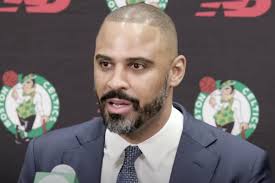Sadly, the Boston Celtics head coach surprised everyone by announcing his resignation.
NBA players are just like everyone else in that they have vices to live with. In the days of Hall of Famer Tommy Heinsohn, things were very different from what they are now in the league, even though these might be more performance-friendly.
In 1969, Sports Illustrated said that the former six-time All-Star “smoked a pack a day the entire time he was playing.” It’s interesting to note that Red Auerbach, the legendary head coach of the Boston Celtics, permitted this behavior to some extent.
Should an All-NBA chain smoker squad be assembled, the renowned Heinsohn would probably land the power forward spot. Joking aside, smoking is not recommended by health professionals, particularly for athletes who are trying to reach peak conditioning. It does, however, offer some alleged “benefits,” such stifling hunger.
It was said that Heinsohn experienced the same thing, and that anytime he abstained from smoking, it became apparent. Tommy, who weighed 218 pounds at the beginning, observed a significant gain in weight throughout this period, which started to have an impact on his effectiveness on the court.
His coach was instinctively drawn to this. It was said that as things became worse, Auerbach would “beg him to start again” with the smoking because he was choosing the lesser of two evils.
At just thirty, Heinsohn retired.
In contrast to some of Red’s other well-known protégés, such Bob Cousy, Sam Jones, or Bill Russell, Heinsohn was frequently considered the team’s bon vivant. The 6’7″ forward wasn’t the first athlete to adopt that persona during that time, but he didn’t live his life centered around basketball.
This decision had an inevitable effect on his physical state—or rather, lack thereof. In fact, Tommy had “the oldest 27-year-old body in the history of sports,” according to a fantastic joke Auerbach reportedly made.
Therefore, it should come as no surprise that Heinsohn ended his career at the age of just thirty after making his breakthrough in 1956. Tommy Gun, who led the C’s in playoff scoring with an outstanding average of 22.9 points per game, was awarded the ROY award. He dominated with 37 points and 23 rebounds in Game 7 of the Finals, helping Boston win a championship.
Subsequently, Heinsohn added seven more championship trophies to his resume, making him the third most decorated player in history. Before retiring in 1965, he was selected six times as an All-Star and was named to the All-NBA second team four times.
The author of the Sports Illustrated piece stated, “In his retirement, Heinsohn has solved this problem by smoking and gaining weight at the same time.”
‘Tommy Gun’, meantime, became the team’s beloved head coach and won two titles in addition to the 1973 COY award. Even after being admitted into the Naismith Hall of Fame in 1986, he continued to be a devoted Bostonian pundit, well-known for his overt partiality. Heinsohn died in 2020 at the age of eighty-six.














Post Comment